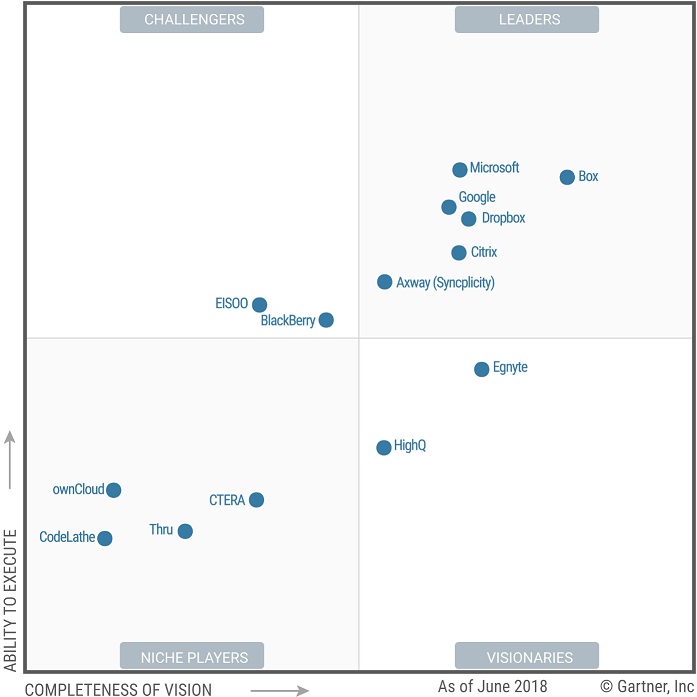What are Content Collaboration Platforms?
As defined by Gartner, the content collaboration platform (CCP) market covers a range of products and services that enable content productivity and collaboration. CCPs are aimed at individuals and teams, inside or outside an organization. Additionally, CCPs increasingly support lightweight content management and workflow use cases. Core user functionalities include:
- Mobile access to content repositories.
- File synchronization across devices and cloud repositories.
- File sharing with people and applications, inside or outside an organization.
- Team collaboration, with dedicated folders.
- A content repository. This can be cloud-based or on-premises, native to the CCP platform or based on other file servers or repositories.
CCPs are platforms with a range of common elements:
-
A repository.
-
APIs, connectors and designer tools.
-
Integrated services.
-
User interfaces and clients.
-
Integration and extensibility.
CCPs enable organizations to implement a content service strategy, through the range of functionality, repository, and interfaces described above. Depending on the extent of a business’s requirements and use cases, a CCP may represent a key investment for creating a digital workplace (see Note 2). CCPs are especially adept at addressing content strategies that focus on file sharing, content collaboration, and lightweight workflow requirements.
The Gartner Magic Quadrant profiles 14 vendors to help the organizations to find the right CCP for digital workplace scenarios. All the CCPs covered in this Magic Quadrant are stand-alone products with file syncing and sharing as their core capability. This kernel is enhanced by additional functional layers of collaboration and content management capability.

Read the full report to find out more.
